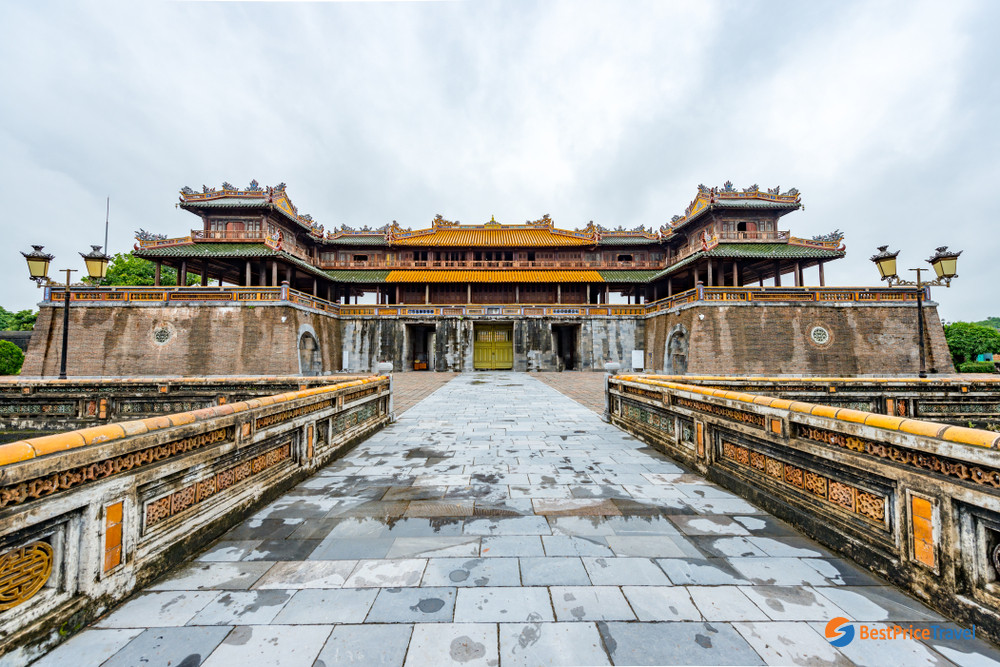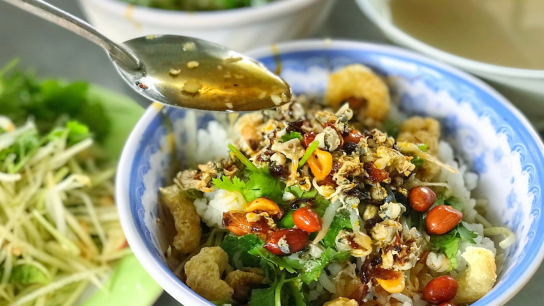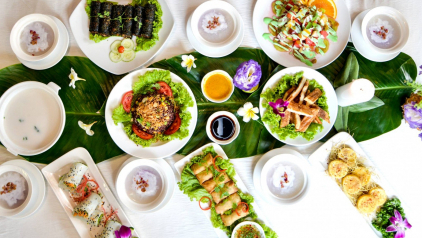Hue - The Ancient Capital of Historical and Cultural Heritage
Owning the charm of Perfume River, Hue is a conservative city with exotic cultures. Being well-known as Vietnam’s ancient capital, where located Nguyen Dynasty’s citadel.
The city represents a demonstration of the vanished Vietnamese feudal empire. Visiting Hue, you can not only learn about the citadel’s history and exhibition but also get the chance to visit many historical attractions such as tombs, pagodas, monuments, etc. The beautiful landscape and the tranquil atmosphere would bring about a relaxing journey while discovering the city.

Truong Tien Bridge
Hue was founded as Vietnam capital by Gia Long – the first King of the Nguyen Dynasty in 1802. Constructed in 1804, the Hue Imperial Citadel was Vietnam’s last royal dynasty’s residence for 143 years. It held the royal position for nine Nguyen Dynasties until 1945. The ancient Citadel was severely damaged during skirmishes with the French in 1947 and destroyed by American forces during the Tet Offensive (a major military campaign of America – Vietnam War in 1968). Including more than 160 buildings originally, only 20 buildings survived from severe damages under French rule and Vietnam War. Fortunately, in 1993, UNESCO designated the Citadel as one point of the World Heritage List, which enhanced Hue and the Citadel’s position in Vietnam tourism development.
Nowadays, Hue city does not attract tourists thanks to the ancient citadel, but also due to many historical attractions, tranquil landscape beauty, and local specialties.

Hue Citadel
Top recommended attractions in Hue
- Hue Citadel: Seek more information and experience about the Vietnam royal dynasty? Hue Imperial Citadel is exactly where you need to come. The Complex of Hue Citadel is a UNESCO World Heritage Site, which consists of a massive complex featuring hundreds of monuments and ruins from the Vietnam War. Entering Hue Citadel, travelers may visit the Forbidden Purple City, the Imperial City, royal tombs, flag tower, pagodas, temples, library, and museum, which offer much interesting information and experience.
- Minh Mang’s Tomb: Also known as "Hieu Mausoleum", Minh Mang's tomb is one of the most mystical tombs of the Nguyen Dynasty, which is a complex system of 40 beautiful constructions, including temples, pavilions, palaces, etc. Combined with landscape and architecture buildings, the tomb can be considered as a microcosm of Hue Citadel, which is a perfect combination of the manmade and natural beauty of Hue.
- Thien Mu Pagoda: Considered as Hue’s iconic symbol, Thien Mu Pagoda and its surroundings comprise a perfect harmony of ancient architecture, natural landscape, and religious atmosphere. Being the oldest pagoda in the ancient capital, Thien Mu has a long history through wars and dynasties, with an interesting legend coming along.

Thien Mu Pagoda in Hue
- Thuy Bieu Village: If you are too familiar with sightseeing and historical attractions in Hue, visiting Thuy Bieu Village is definitely a good choice for travelers who seek to explore the city’s culture and people, especially when Hue is also famous for rustic and simple features of old villages. The village is, in fact, one of the most attractive destinations of Hue. With a long history and its iconic beauty, Thuy Bieu Village attracts many tourists from all over the world for discovery.
- Dong Ba Market: Having the longest history of its kind in Hue, Dong Ba Market is an interesting place for travelers who seek cultural experience during the historical trip around Hue. The market does not only give you plenty of good food choices from the street vendors, but also an authentic cultural experience.
Hue Culture
There are many festivities held in Hue, especially during half front of the year, such as Tet (between January to February), Hue Festival (April), spring markets, royal ceremonies, traditional villages’ festivals, etc.
Hue people are friendly and conservative. They can be really nice to you as guests, but sometimes they may be shy or quiet. They consider family as the top priority, which explains why Tet is their most important festival when the family gathers together to celebrate the new year.

Hue Traditional Costume
Hue Weather
Travelers are advised to avoid Hue’s typhoon season, from September to December. Visiting Hue from January to April might be a perfect time when the rain is not so heavy anymore and the weather is cool enough to enjoy the city tour. The first 4 months of the year also bring about many annual festivities, which are wonderful chances for travelers to discover Hue at local festivals.
Recommend Hue itinerary for 3 days
Transportation in Hue
Travelers often travel around Hue by taxi, motorcycles, or cyclos, especially when wandering around the tranquil city.
You can also travel by Hue bus, which includes 15 buses on 7 routes. There are many routes stopping right in front of tourist attractions. The buses run from 5 am to 18 pm daily and cost only 3,000 VND to 5,000 VND per ticket.
Travel Tips
- Hue’s weather is sometimes a bit annoying and unpredictable: You might want to research the weather condition before booking your holiday.
- Foreigners may ride a motorbike without a license: Leaving your riding license behind? Don’t worry, if you are confident enough to ride a bike in Vietnam, then the Hue cops welcome you to travel around by motorbike without asking for a license. However, don’t forget to bring your passport as your identity.
Recommended Hue Tours
 Glimpse of Hue Half Day - Small Group8.9Very good - 3 reviewsHue - Thien Mu Pagoda - Hue Citadel/pax
Glimpse of Hue Half Day - Small Group8.9Very good - 3 reviewsHue - Thien Mu Pagoda - Hue Citadel/pax Best of Hue City Tour Full Day9.6Excellent - 12 reviewsHue - Perfume River - Thien Mu Pagoda - Hue Citadel/pax
Best of Hue City Tour Full Day9.6Excellent - 12 reviewsHue - Perfume River - Thien Mu Pagoda - Hue Citadel/pax

![Top 10 Best Foods in Hue [Must-try]](https://d122axpxm39woi.cloudfront.net/images/guides/422_238/5f22454f6d9e8.jpg)


